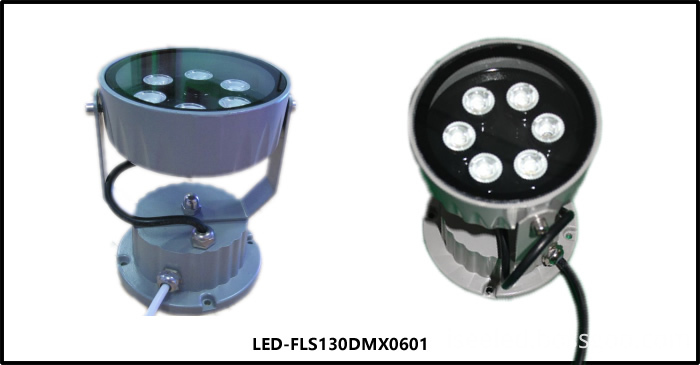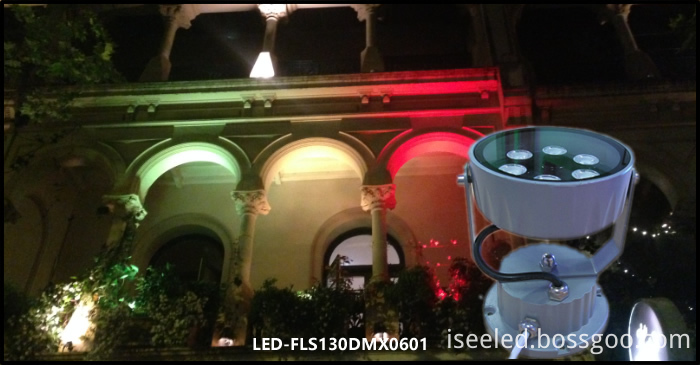It is reported that Sony sold US$1.1 billion to the US headquarters building, and Sharp has not yet decided to choose Hon Hai or Qualcomm as its single largest shareholder. As a Japanese electronics giant, how can Panasonic save itself?
LED Spot Light is a led light fixtures, mostly to project a specific project, and low voltage outdoor application. LED spotlighs is different from the LED Flood Light which is smaller can be install in a narrow place. And the 3W Led Spot Light, 6W LED Spot Light is widely use for building and garden lighting decoration.
Photo show of LED Spot light:
LED Spot Light Led Spot Light,Led Outdoor Spotlights,Led Spotlights,Commercial Led Spot Light Shenzhen Iseeled Technology Co., Ltd. , https://www.iseeledlight.com
The new president Jin Heyi, who took office in the middle of last year, has given the answer. At the 2013 International Consumer Electronics Show (CES), his half-hour English-language keynote speech changed Panasonic's definition from "television manufacturers" to "environmental smart manufacturing companies" (Eco&Smart). He even invited Panasonic partner GM to jointly showcase Panasonic's new products and solutions.
Can Panasonic really be "smart" from this? Or can Panasonic's new strategy help it turn around? Its latest financial report shows that Panasonic's fiscal year 2012 is expected to lose 765 billion yen, or about 8.5 billion. This means that the Japanese electronics company, which is about to celebrate its 100th anniversary in five years, has accumulated losses of US$24 billion in the past five years. "Panasonic's launch of new products is a must, but the product is fully blossomed and unfocused changes are difficult to sustain," said Roland Berger partner Yan-nig Gourmelon. Another reason why people can't be blindly optimistic is that Jinhe Yihong did not mention the revenue that new products might bring to Panasonic from beginning to end.
change
“Japanese companies may be too dependent on their previous technological advantages. But they are not in the right cy-cle. There are Korean companies, and existing Chinese companies have already replaced them in the market in large quantities. Location," Yannig Gourmelon said.
The rise of Samsung and Apple is considered to be one of the biggest direct reasons for the decline of Japanese electronics companies. Following the two leading companies and launching a revolutionary overall product has also been considered the way out for Panasonic, Sharp, and Sony. But Panasonic clearly chose another path of transformation. Whether this road will lead Panasonic's "self-rescue" success is still inconclusive.
"Panasonic will shift from the current B2C to B2C and B2B," said the Panasonic insider. To be exemplified, when promoting the Panasonic Tablet Touchpad, Jin Heyihong mentioned that all the top five smartphone manufacturers in the world, including Apple and Samsung, use Panasonic technology on the terminal. For example, while promoting Panasonic LED products, Jinhe Yihong mentioned Rosen, the second-ranked chain convenience store in Japan, which has already cooperated with Panasonic in the field of energy conservation. It plans to launch 10,000 in June 2013. Home "Green Convenience Store". Not to mention the "My Link" entertainment system in the Panasonic battery installed in Tesla and the general-purpose products. It sounds incredible, but Panasonic, which is carrying huge losses, is still everywhere. It is just "invisible".
At the 2013 International Consumer Electronics Show, Jin Heyi Hong's display of Panasonic is divided into six parts: TV, home, car, business, travel and community, involving Panasonic intelligent interactive TV, home energy processing, car battery, Mobile AV, tablet, LED lighting, avionics and other products. For example, in Panasonic's home energy solution, it works with IBM [microblogging] to connect appliances and cloud processors to achieve smart energy efficiency and energy efficiency management; in Panasonic's automotive solutions, it is the most famous in the United States. Tesla, one of the electric car manufacturers, supplies batteries and also installs the "My Link" entertainment system that can download the latest entertainment software at any time. In the business field, Panasonic has developed a touchpad with a 20-inch screen. . Similar to Microsoft's [Weibo] Surface, it can transmit information such as drawing modifications back to the company through the cloud server; in the Panasonic community solution, the energy efficiency of its outdoor LED products is considered to save 50% energy. In addition, Panasonic has developed avionics entertainment products.
It looks dazzling, and it is impossible to determine whether this is the Panasonic that has been called “the thin west†because of the loss in the past five years. However, Panasonic did not “evolve into people†overnight. Most of its new products, such as smart home appliances and LED lighting, are upgraded on the original products. Its battery products have been applied to UPS power supplies, emergency lights, power tools and electric bicycles as early as the 1990s. . Moreover, in the past few years, Panasonic's former president, Daping Wenxiong, has been promoting the "three-in-one" and brand unification of Matsushita Electric Industrial Co., Ltd., Matsushita Electric Works and Sanyo Electric, and promoted the company's business to expand into new energy and system solutions.
Transformation
Objectively speaking, Panasonic's innovation measures are not ineffective. Interbrand, the world's largest integrated brand consultancy, has selected Panasonic as the “2012 Global Environmental Brands Listâ€. It is the number one consumer electronics company on the list. Panasonic does show some determination to reform, although the success of this product's comprehensive "transformation" road is still unknown.
During the entire presentation and presentation of the 2013 International Consumer Electronics Show in the United States, the 56-year-old Jin Heyihong has always had a harmonious and even shy smile. Unexpectedly, he was a "shocking president" who asked for a cut in more than a third of Panasonic middle-level managers in the previous year. He said that Panasonic has become a "loser" in the consumer electronics industry.
In June 2012, Japanese manager and best-selling author of the "Director's Handbook", Hasegawa and Hiroyuki, attributed the losses of Panasonic, Sony, and Sharp to the year-end loss. "In the case of increasing competitiveness of products in China and South Korea, Japan Electronics Enterprises have mistakenly chosen the strategy of extending the lifeline of similar products, and they are “over-investing†in these areas. Jinhe Yihong clearly recognized this problem. Although Panasonic displayed a large number of home appliances at the same time, during the entire speech, the new president avoided talking about Panasonic's traditional business, although he did not explicitly indicate the possible operating income and profits of the new products. .
Jin Heyihong holds a master's degree in computer science from the University of California. He also has more than 100 invention patents. In 1979, Jin Heyihong joined Panasonic and led the Panasonic Automotive Systems Division for three years, and he himself bluntly expressed his "love" for the automotive-related business. All of the resumes directly related to “technology†have led people to believe that he has the ability to lead Panasonic in technological innovation, while ignoring the changes he may have as the “top promotion of Panasonic's fastest-growing executivesâ€.é„力. In fact, as early as the end of 2012, some commentators in Japan said, “At present, Jinhe Yihong is indeed the most thoroughly reformed one among the three major electronic companies.†“Panasonic has turned to the production of new products such as car batteries. The field makes sense. Its operational difficulties in recent years have been due to its previous strategic choices," Yannig Gourmelon said.
In addition, Panasonic has also aggressively cut down the sluggish business sector. Jinhe Yihong once said that after the reorganization of Panasonic, there will be no room for business with a profit margin of less than 5%. At present, it is impossible to determine which specific businesses have been cut, but Panasonic’s global layoffs of 10,000 people are enough to prove that the reorganization plan of Jinhe Yihong is not “speaking and playingâ€.
Data from Roland Berger also showed that Panasonic sold 7,600,000 plasma TVs in 2012, accounting for about 40% of its total TV sales; in 2013, the number of Panasonic plasma TVs will be only 2012. One-third of the year. About 85% of its TV sets will be LCD TVs.
In explaining the reasons for the closure of the Shanghai plasma TV factory, Panasonic China mentioned that Panasonic's plasma business will expand from home to commercial display. 


January 25, 2020